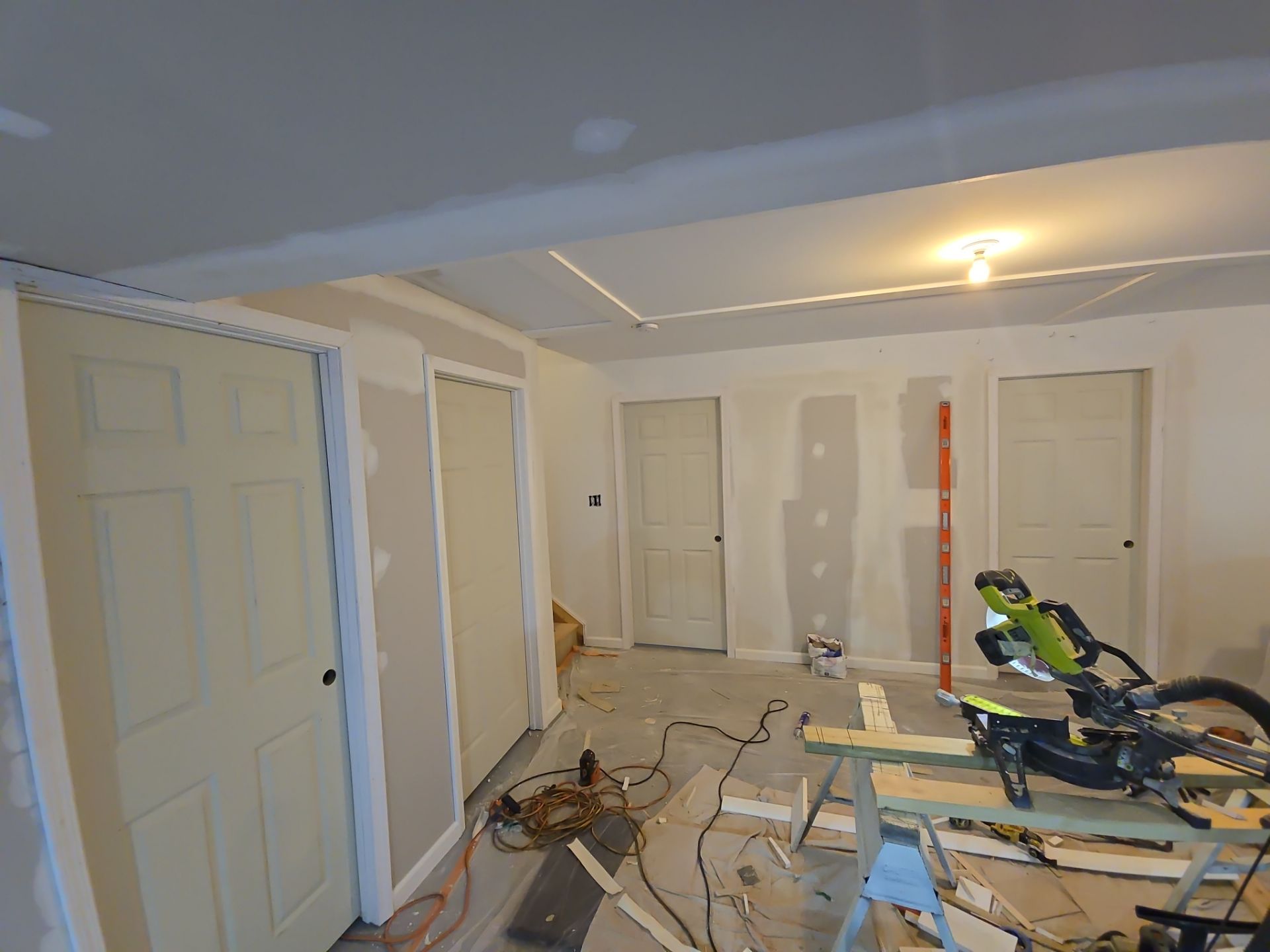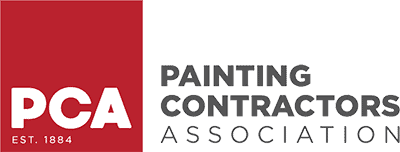Let’s be honest—painting sounds easy enough. Pick a color, grab a brush, and go, right? But if you’ve ever tackled a room yourself, you probably found out the hard way that it’s not always that smooth. Whether you’re dealing with streaks, bubbling, or peeling after a few weeks, the problem often comes down to the same issue: painting mistakes.
And if you live around Martinsburg, WV, where older homes meet unpredictable humidity, those small errors can snowball fast. We’ve seen it happen in everything from bedrooms and kitchens to drywall and cabinetry. Sometimes it’s about choosing the wrong product. Sometimes it’s about skipping the prep. Either way, the end result is the same—frustration.
This guide walks through some of the most common painting mistakes homeowners run into, why they happen, and how to avoid them.
Key Takeaways:
- Skipping surface prep leads to peeling, uneven paint, and wasted time.
- The wrong paint type or sheen can ruin how your space looks and feels.
- Lighting affects how paint color appears—test samples in natural and artificial light.
- Cheap brushes and tape often cause drips, streaks, and messy lines.
- Hiring professional painters in Martinsburg, WV can save time and avoid costly fixes.
6 Painting Mistakes You Should Avoid
If you’re repainting your home, there’s a lot that can go wrong—more than most people expect. From peeling walls to uneven finishes, the smallest slip-ups can lead to costly fixes.
Below, we break down some of the most common painting mistakes to avoid so your next project goes a whole lot smoother.
1. Rushing the Prep (Or Skipping It Altogether)
This one tops the list for a reason. Prep work might feel like a chore, but it’s the foundation of any successful paint job. We’ve seen cases where paint starts peeling within a week simply because the wall wasn’t properly cleaned or primed.
Here’s what often gets skipped:
- Cleaning the surface: Dust, oil, and grease (especially around the kitchen and bathroom) can stop paint from sticking.
- Patching holes or cracks in drywall: Even tiny nail holes can ruin a finish if you paint over them.
- Sanding rough spots: Especially important on wood trim, furniture, and cabinetry.
- Using the right primer: Not all primers are the same. And yes, you absolutely need one. We break this down in our blog on how many coats of primer to use, if you’re unsure where to start. Think of primer like the double-sided tape that helps your paint stay where it should be. It also makes the paint sheen look more even across the whole surface.
2. Picking the Wrong Type of Paint
Here’s where the paint aisle gets overwhelming. Latex or oil? Satin or matte? Acrylic or enamel? The wrong choice can lead to chipping, bubbling, or uneven drying, especially in high-moisture areas like your bathroom or kitchen.
Some quick facts:
- Acrylic paint is great for interiors and dries quickly.
- Oil paint is more durable but takes longer to cure and gives off strong fumes.
- Latex paint is user-friendly, dries fast, and cleans up with just water.
- Paint sheen makes a big difference. Flat finishes hide imperfections but are harder to clean. Semi-gloss or satin is better for areas like kitchen cabinets, baseboards, and bathroom walls.
3. Bad Lighting = Bad Color Decisions
You’d be surprised how many homeowners fall in love with a color in the store, paint the whole room, and then hate it the next morning.
Lighting—both natural and artificial—has a huge impact on how a color appears. Shadows in one corner of the bedroom can make your “soft beige” look gray, while light pouring in from a window might wash it out completely.
Our advice? Paint sample swatches directly onto the wall and check them in the morning, afternoon, and evening. Give it a few days. And if you’re trying to cover up something bold (like a red accent wall), be prepared to need a quality primer and multiple coats.
Not sure how much paint to buy? Use our paint calculator to avoid wasting a gallon or two.
4. Forgetting to Check the Weather (Yes, Even Indoors)
Humidity matters—especially in Martinsburg, WV where the seasons don’t always play fair. If the air is damp, paint takes longer to dry and may not cure properly. That leads to streaks, bubbling, and peeling before you’ve even cleaned your brushes.
If you’re painting outdoors, the temperature and wind can affect drying time too. We’ve broken that down in our article on the right weather and temperature when painting exterior surfaces. But even indoors, a humid day can ruin a good finish. Turn on a fan, crack a window, or wait for drier air.
And remember: don’t start spray painting or brushing on your second coat until the first one is fully dry. Otherwise, you risk ruining all your work.
5. Poor Tool Choices (Your $1 Brush Is Not Helping)
Tools matter. A lot.
Low-quality paintbrushes, rollers, and tape can leave behind streaks, drips, or unwanted textures. Ever tried painting a ceiling with a short-handled brush? You’ll feel it in your neck for days, and the results won’t be great either.
Here’s what we recommend:
- Use angled brushes with good bristle quality for clean edges.
- Choose the right sandpaper grit for surface prep.
- Don’t skip out on paper or cloth drop cloths to protect your floors and furniture.
- Cheap painter’s tape may save a few bucks, but it can peel paint or let it bleed through.
If you’re working on woodworking projects like trim or kitchen cabinetry, invest in quality tools. It’s not just about the look—it affects how long the finish will last.
6. Not Hiring the Right Help
DIY painting can be fun—but it’s not always worth it, especially if your space has textured walls, tricky corners, or hard-to-reach ceilings.
Hiring professional painters in Martinsburg, WV means you’re getting experience, efficiency, and long-term results. They know which paint sheen fits best in each space. They won’t skip primer or forget the prep. And they can often finish the job faster than a weekend warrior juggling work and home life.
Plus, they already have the good brushes, spray painting tools, and ladders that you’d otherwise need to rent or buy.
Wrapping It Up: What to Do Next
Avoiding painting mistakes isn’t just about technique—it’s about patience, the right products, and knowing when to call in the pros. If you want clean lines, durable coverage, and a room that actually looks like the color you chose, take the extra time upfront. Prep well. Use quality tools. And when it makes sense, let experts handle it.
That’s where Appaloosa Painting Co. can help.
Here’s how our painting process works:
- We evaluate your room, wall, or project needs and help choose the right color, primer, and paint sheen.
- Our team carefully preps surfaces: sanding, patching, and cleaning where needed.
- We use high-quality acrylic paint, latex, or oil paint depending on the space.
- We tape and protect your furniture, floor, ceiling, and trim.
- We use professional brushes, rollers, and spray tools for clean, even finishes.
- We’ll clean up so your space is ready to enjoy—no dust, no drips.
Whether you’re freshening up your bedroom, fixing a bad drywall job, or repainting a kitchen cabinet, we’re ready to help.
Call us at 540-202-7600 for a FREE estimate.



